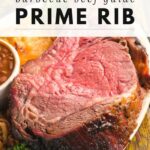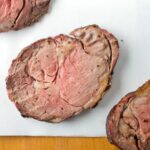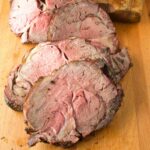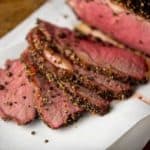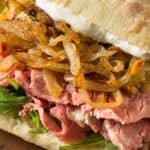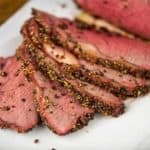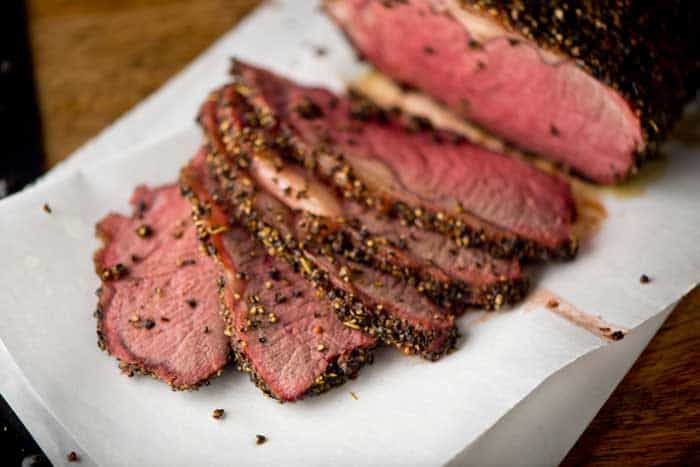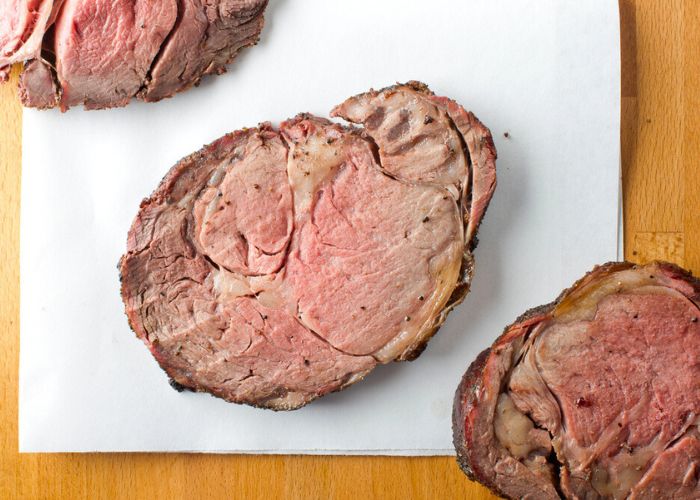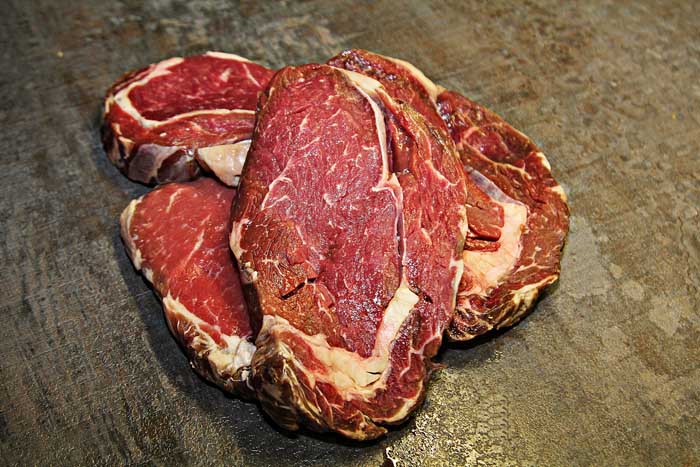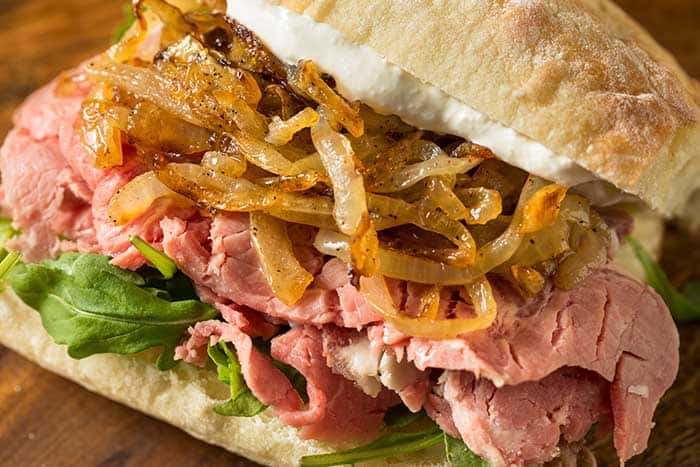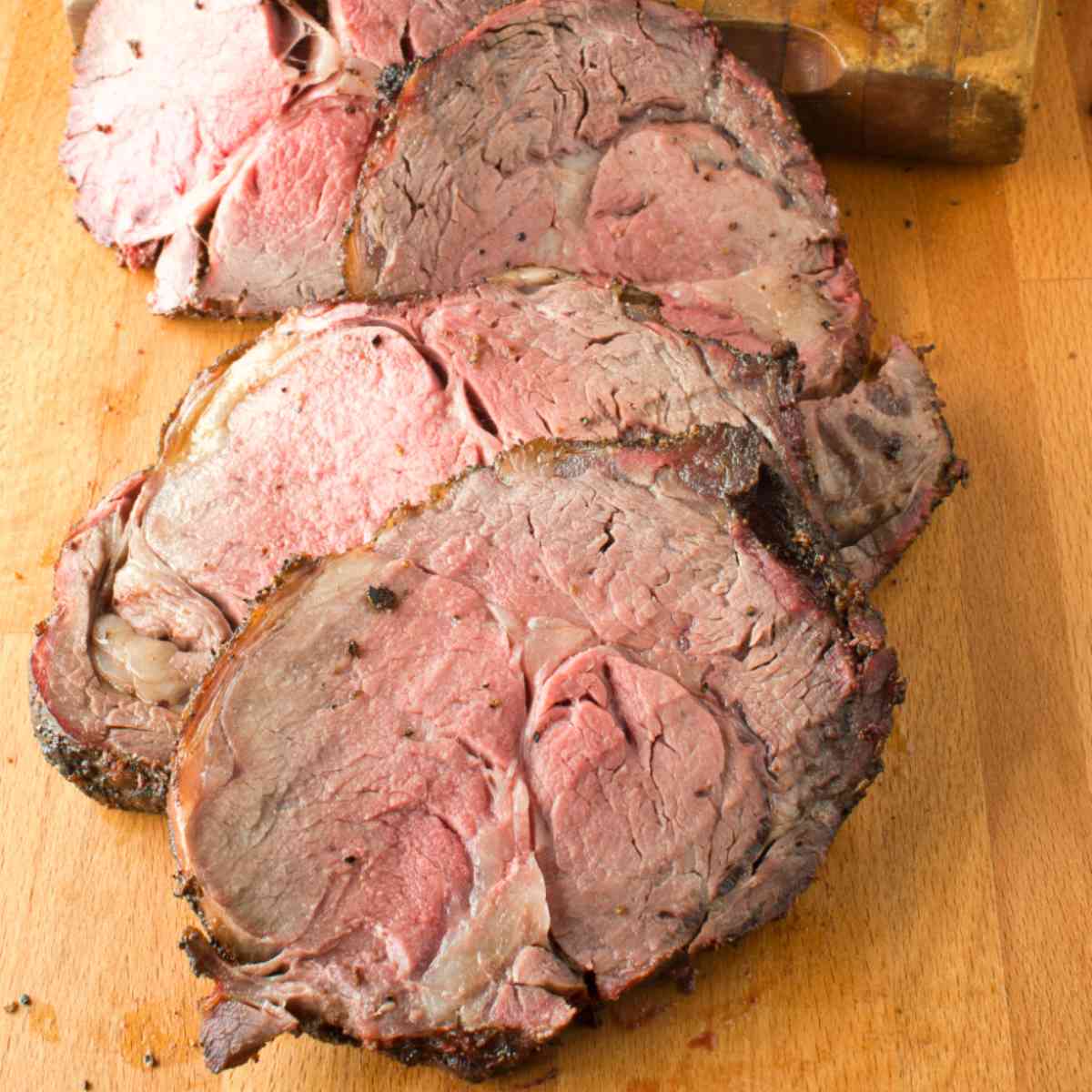Prime rib is a juicy beef cut that’s perfect for barbecue and slow oven roasting. From buying advice to meat prep and carving, find out everything you need to know about this delicious beef rib portion.
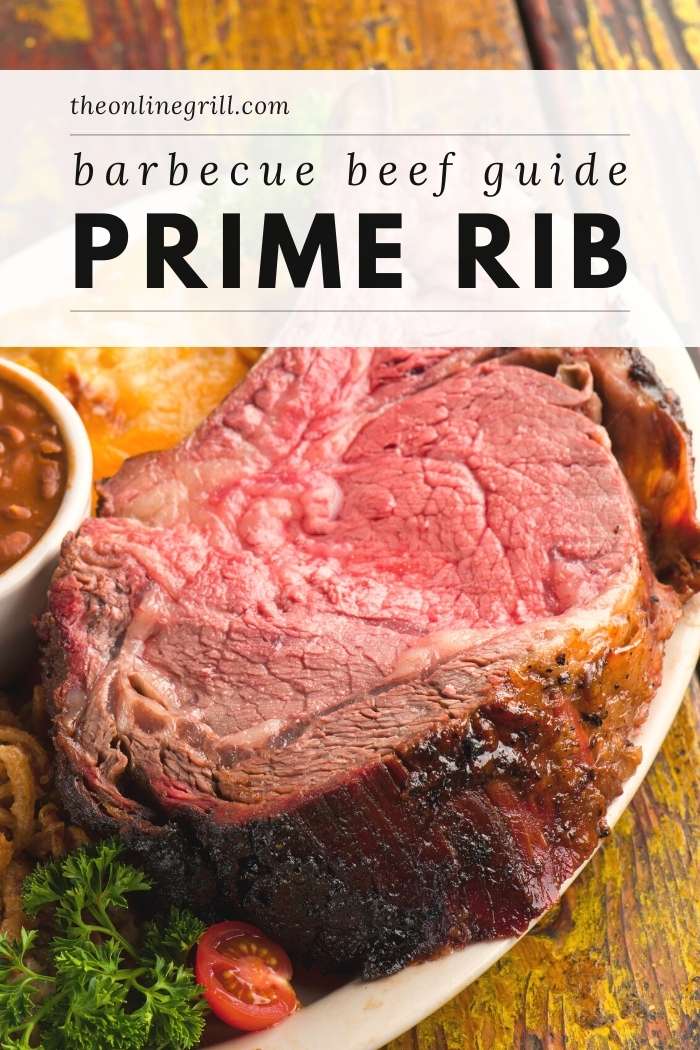
Prime rib (also known as standing rib) comes from the beef rib primal cut in the steer. The rib is one of the main beef primal cuts and is located between the chuck and short loin and above the plate.
Prime rib is one of the four sub-sections of rib. This rib portion is used most commonly for barbecue, especially in roasts. Let’s look at what makes prime rib popular to be used for barbecue meat cooking.
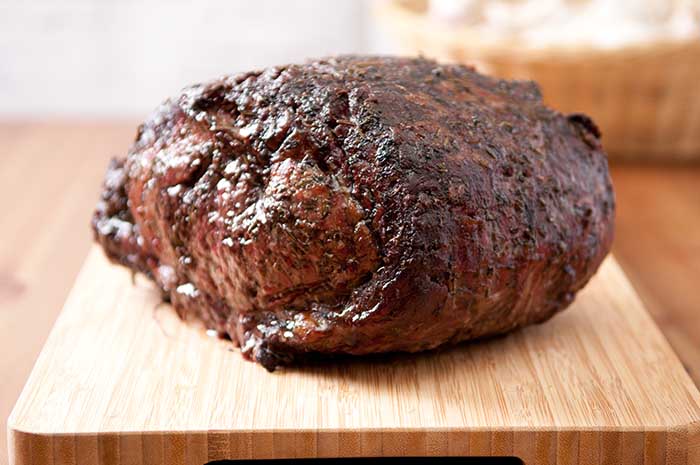
What is Prime Rib?
Prime rib is also called standing rib roast. It comes from above the lower back and behind the shoulders of the cow. It comprises ribs 6 through 12. But it can be further divided into smaller portions or used to make a standing rib roast with all seven ribs. While bones can be easily removed from prime rib, prime rib roast is made with the bone left in to provide more flavor.
Prime rib is one of the most flavorful cuts of beef. It is extremely juicy due to a thick layer of fat on it. When cooked, it ends up with an intensely beefy flavor that you can elevate with extra seasoning. When cooked correctly, the fat in prime rib melts to give it a moist flavor and smooth texture. Hence, the taste of cooked prime rib can also be described as buttery.
The raw cut of the prime rib has a marbled texture due to its high-fat content. A 1-pound cut of prime rib contains about 6 ounces of fat. This high fat content gives raw prime rib a marbled texture across its surface, with one or two thick white streaks across the middle.
What Part of the Cow Is Prime Rib?
Prime rib comes from the ribs of the cow. Ribs are located right behind the shoulders and above the plate in the steer. When discussing the location of ribs according to the primal cuts of beef, it can be described as located between chuck and sirloin.
Ribs are divided into four sub-sections: ribeye, prime rib, short ribs, and back ribs. The prime rib subsection contains ribs from sixth till twelfth. Prime rib section can weigh anything between twelve to sixteen pounds in an adult cow and easily feed up to 14 people.
Prime Rib vs. Ribeye
Prime rib and ribeye are two different subsections of the rib primal beef cut. Since both come from the same region of the steer, the two cuts have a similar texture and buttery taste when cooked. However, there are still differences between prime rib and ribeye.
Ribeye is much smaller than prime rib and is preferred to make steaks. On the other hand, due to the large size of prime rib, it is mostly used in roast recipes.
You can buy any of these interchangeably, depending on the quantity you need. For roasting purposes, the obvious choice is prime rib. However, steaks from ribeye and prime rib are both equally flavorsome.
Ribeye steaks are smaller in size, so you should go for prime rib steaks if you are looking for a large serving size. Budget-wise, ribeye is a smarter choice for a single serving or a serving of two, as it is much smaller in size and hence much cheaper.
How to Buy Prime Rib
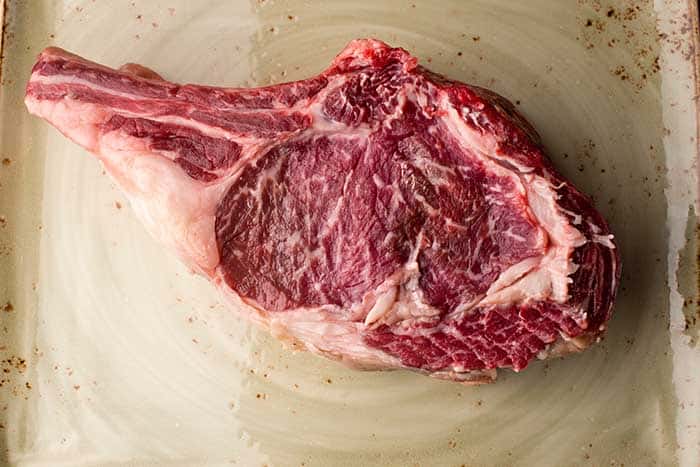
Prime rib can cost anywhere from $13 to $17 per pound. It is usually sold as a whole piece but is not stocked everywhere. You will need to find a high-end or specialty grocery store to get your hands on this flavorful cut of beef. It is usually sold as standing rib roast or beef bone-in rib roast.
You can always find prime rib at a butcher’s shop, though. Butcher shops have all kinds of cuts. They might even let you buy a certain quantity of bones too. However, it has to fall between three and seven. If you want to buy less than whole, ask the butcher to count the bones from you from the chuck end. The ribs near the shoulder are larger than the ones near the sirloin. Hence, you get more meat from the chuck end of the prime rib.
You can ask the butcher to take the bone out if you plan to serve steaks, but ensure you leave it in for a standing rib roast.
How to Cut Prime Rib
Prepare prime rib using a boning knife to make small cuts around the bones, and slowly pull them from the beef. You don’t have to worry too much if there is some meat stuck to the bones. You can use these bones to make beef stock and easily take the meat from the boiled bones in a sandwich. You can also separately roast the ribs to enjoy chewing on roasted ribs.
Once the bones are removed, you can fold the boneless meat onto itself and tie it with a string. You can then place this tied piece of meat on a grill or in a smoker to roast or make trimmings to use in other recipes.
You can remove the bones from a standing rib roast similarly as you can from a raw prime rib. Boning knives work perfectly through rib roasts too. Make small cuts close to the bone to get as much boneless meat as possible. However, you can enjoy nibbling the roasted meat off of bones too. Separate the bones from each other by making precise cuts between them.
You can then cut thick or thin slices of the boneless roast as per your preference. However, always ensure that you cut the meat against the grain to allow it to hold its shape and look appetizing. Serve thick slices as roast steaks and thin slices in sandwiches.
Meat Substitutes
There is no substitute for the roasted ribs of prime ribs. However, you can substitute the meat of prime rib roast with top loin roast. Top loin cut is less marbled than prime rib, meaning it doesn’t turn out as juicy or buttery, but it is a decent and affordable alternative.
How to Barbecue Smoke Prime Rib
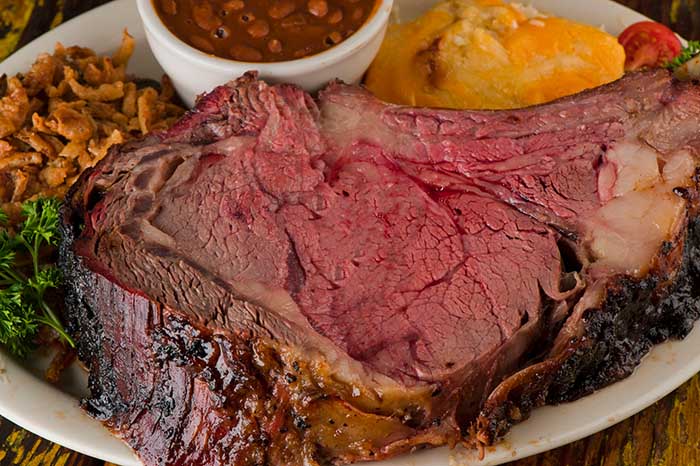
Nothing demonstrates the rich, buttery flavors of this beef cut than with smoked prime rib. Start by firing up your smoker to 225°F (107°C). As the smoker warms up, prepare the roast with spices and glaze and insert an oven-safe thermometer in the thickest part of the beef. Place it on your smoker’s grates and close the lid.
For a rare roast, you need to smoke for 35 minutes per pound of meat. The internal temperature of the roast should reach 120°F or 130°F for a medium-rare roast.
Remove the roast and let it rest for 20 minutes. As the roast rests, increase the temperature of the smoker to 400°F. Sear the roast on the grill at a high temperature until it develops desired crispiness. The ideal internal temperature should stay 130°F for rare and 140°F for a medium roast at this point. Remove and let rest for another 15 minutes before serving.
Best Wood
Hickory, oak, and pecan are among the best woods for smoking prime rib. However, if unavailable or out of your budget, you can also use applewood or mesquite.
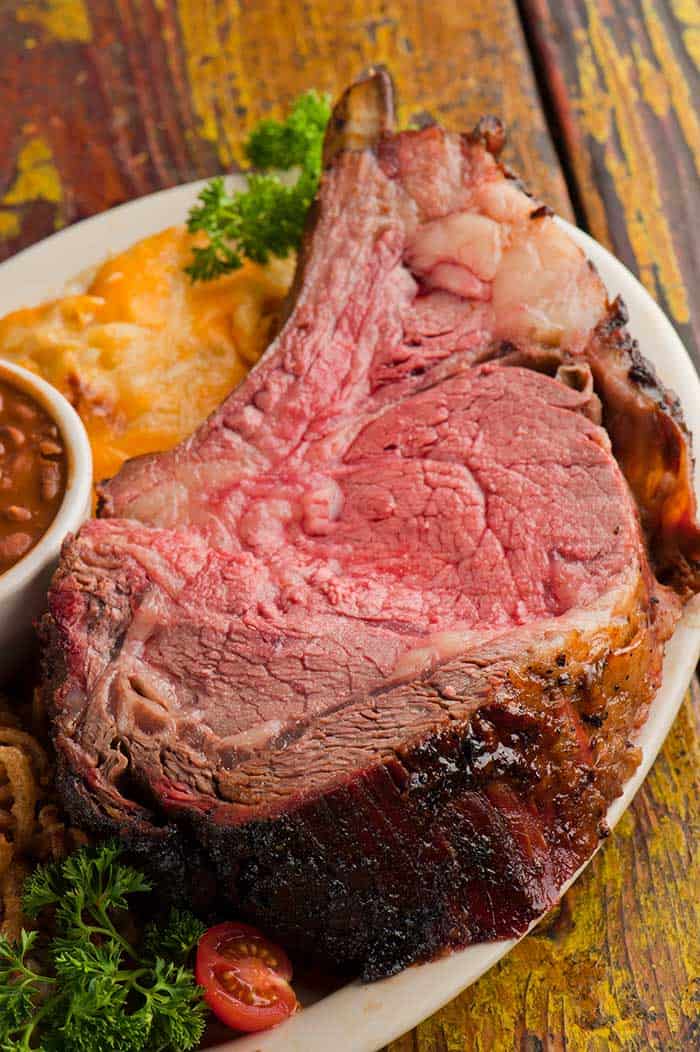
Serving Ideas
Standing rib roast is often paired with classic potato dishes, like mashed potato, wedges, fries, or scalloped potatoes. For vegetable sides, try roasted Brussels sprouts, grilled mushrooms, or yellow squash. Also, try filling smoked side dishes, like mac n cheese or risotto.
Storage
You can store roasted prime rib in the freezer for up to six months if it’s tightly packed with cling film and foil. Leftover prime rib should also be packed similarly to keep for up to five days in the refrigerator.
Uncooked prime rib can stay in the fridge for up to three days. After three days, it can begin to spoil and become unsuitable for consumption. You can also freeze uncooked prime rib in the freezer for up to three months. However, it is always better to buy fresh prime ribs when needed, as thawing frozen prime ribs can be a hassle. Moreover, thawed prime ribs don’t roast as nicely as fresh prime ribs.
